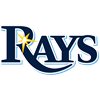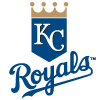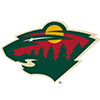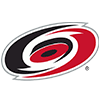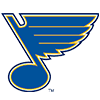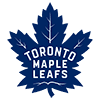I've been asked a lot about strategy lately. What was your strategy? Was (insert name here) part of your plan?
At the recent Fantasy Sports Trade Association draft, the participants selected their first-round pick along with an explanation live on SiriusXM. After a rather lengthy validation for Mike Trout, two picks later I leaned into the mic and bellowed, "We'll take Nolan Arenado because he's good at baseball."
Admittedly, it was done for comedic effect, but it isn't all that far from the truth. I really don't enter a draft or auction with a strategy; it's more a style. I know what I want my team to look like, and picking players good at baseball is the best path to get there. OK, there's more to it than that.
There is no surefire method. What's best is what works best for you. I attack drafts and auctions by working backwards. It's not a one-size-fits-all approach.
Based on the format of the league, I'll come up with a general team construct. This doesn't entail targeting specific players (not exactly, anyway) or setting category targets (ever), but rather big-picture goals. Pounding up hitting counting stats while building a competitive staff is almost always the plan. In larger or more competitive leagues, I'm willing to sacrifice batting average if necessary. Batting average is the most tightly bunched category, and it exhibits the most variance. You can project to one of the higher league marks, only to finish lower due to some bad
I've been asked a lot about strategy lately. What was your strategy? Was (insert name here) part of your plan?
At the recent Fantasy Sports Trade Association draft, the participants selected their first-round pick along with an explanation live on SiriusXM. After a rather lengthy validation for Mike Trout, two picks later I leaned into the mic and bellowed, "We'll take Nolan Arenado because he's good at baseball."
Admittedly, it was done for comedic effect, but it isn't all that far from the truth. I really don't enter a draft or auction with a strategy; it's more a style. I know what I want my team to look like, and picking players good at baseball is the best path to get there. OK, there's more to it than that.
There is no surefire method. What's best is what works best for you. I attack drafts and auctions by working backwards. It's not a one-size-fits-all approach.
Based on the format of the league, I'll come up with a general team construct. This doesn't entail targeting specific players (not exactly, anyway) or setting category targets (ever), but rather big-picture goals. Pounding up hitting counting stats while building a competitive staff is almost always the plan. In larger or more competitive leagues, I'm willing to sacrifice batting average if necessary. Batting average is the most tightly bunched category, and it exhibits the most variance. You can project to one of the higher league marks, only to finish lower due to some bad luck. The opposite is also true; projecting to finish low, but having good luck propel you into more points. I prefer not to expend assets in such a combustible area.
Pitching is key. For a review of my process, please check out a column from last spring. I'll be updating those tiers based on the 2017 player pool in a future episode. In a nutshell, I devise several pathways to assembling a staff that should land in the upper third of the standings. This encompasses knowing how many pitchers of each tier are needed to land in the desired spot. All sorts of combinations are laid out, so I'm prepared for whatever the room gives me.
Working backwards is a deeper exercise than starting with the final team composition in mind, then navigating the draft to get there. It also involves identifying players I likely favor more than the room, usually during the second half of the draft or auction. I'm never prescient on every player, but always pinpoint a sufficient number of targets so I don't end up getting burned. Well, almost always.
The way to take advantage of these players is to make sure I have available roster spots, in terms of positions and contributions. This directs my early picks or auction purchases. My favorite example to use this season is second base. Devon Travis, Logan Forsythe, Dustin Pedroia, Jonathan Schoop and Cesar Hernandez are all being drafted at a point my numbers suggest they'll yield a positive return on investment. As such, I'm less likely to roster Jose Altuve, Daniel Murphy, Robinson Cano or Brian Dozier. I say less likely since I still have middle infield and utility to work with, so if one of the keystone studs slips to a point I can't ignore their potential return, I'll gladly take them.
The opposite is true of the hot corner. Other than Justin Turner, who should pick up some helium as March approaches, there aren't many third baseman that move the needle for me who are generally still on the board during the second half of the draft. Guys like Mike Moustakas and Nick Castellanos are nice, but don't offer the same potential return as the second basemen. That said, Yangervis Solarte, Adonis Garcia and Eugenio Suarez do meet my criteria, but with first base being shallower than normal, my preference is to use one of those late third baseman at corner infield or utility. As such, the first time Nolan Arenado, Kris Bryant, Josh Donaldson or Kyle Seager are near the top of my cheat sheet, I call their name (or click their button).
This part is tricky, and often puts me in a spot from which I need to carefully extricate myself. Usually, regardless of the chosen pitching course, there's a cross-section of the same hurlers. Again, working backwards, I determine some of the other positions that are likely to leave the board at the same time. The reason being, after I'm done popping those arms, I don't want to be staring at an available inventory that won't help me. To combat this, the final pre-draft prep entails identifying alternate points in the draft, or price points in an auction, to fill those spots under the guise of desired team construct. This changes from year to year, based on the player pool. This season, catchers are leaving the board concurrent with the middle of my pitching staff. As such, I'm not reticent to tab Jonathan Lucroy and/or J.T. Realmuto early with Jett Bandy, Cameron Rupp, Derek Norris and Francisco Cervelli all usually there for the taking late.
Successful teams need a balance of floor and ceiling. While I understand, and appreciate upside, I learned the hard way I'm not a riverboat gambler. There's a common notion that to take down the National Fantasy Baseball Championship (NFBC) or even win Tout Wars or LABR, it's necessary to take chances. After years of drafting in a conservative manner, I bought into that principle, rather unsuccessfully. After talking to some of the more accomplished high-stakes and industry players, I opted to return to my wussy roots, sticking to safe drafting, this time being less focused on value and more on team construction. Let's just say I'm pleased with the results. Your team, your call of course, but I'm not going to be the one to snag Trea Turner. Maybe this really is the year for Bryce Harper or Giancarlo Stanton; it won't happen on my roster. Perhaps Stephen Strasburg avoids injury the entire season and wins the Cy Young; someone else will reap the benefits. So, while it's cliché, it's more my style: safe early, chances late.
Most the above is scientifically oriented. My player projections are driven by algorithms, seasoned with a playing time expectation. Relative ranking of players is derived from formulas. Granted, there's some feel required when it comes to gauging the market, but the foundation of my prep falls under the scientific umbrella.
The draft or auction itself is another story. Using the above to assemble a team is almost all art. As such, it's hard to express the drafting process in words. Regardless of your strategy, the following is true:
Reading the room is integral. This requires knowing your opponents' tendencies, assuming you're familiar with the competition. Obviously, each room is different, but having a sense of the general market is crucial. Not every pick or purchase is dictated by the pre-draft preparation. Many times, assumptions of what will transpire are made, with the player drafted the most useful if the scenario comes to fruition. Other times, the potential return on investment of a player is too significant to ignore, even if that means rethinking how you plan to piece together the rest of the puzzle. The better prepared you are, the better you can adapt to any scenario. See a recent Z Files on mock drafting to delve into that further.
League rules all require filling a roster with a set number of players occupying designated positions. Independent of your strategy, and that of your league mates, everyone leaves the festivities with a legal roster. How everyone arrives at that point is the challenge. While I apologize for having so many abstract elements to my own prep, it's what works for me. There's nothing wrong with preferring more stringent guidelines. Different strokes, as the say. As always, I'll happily address questions in the comments.







